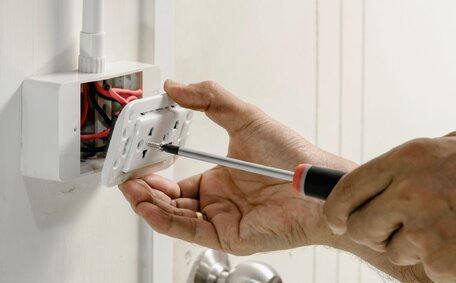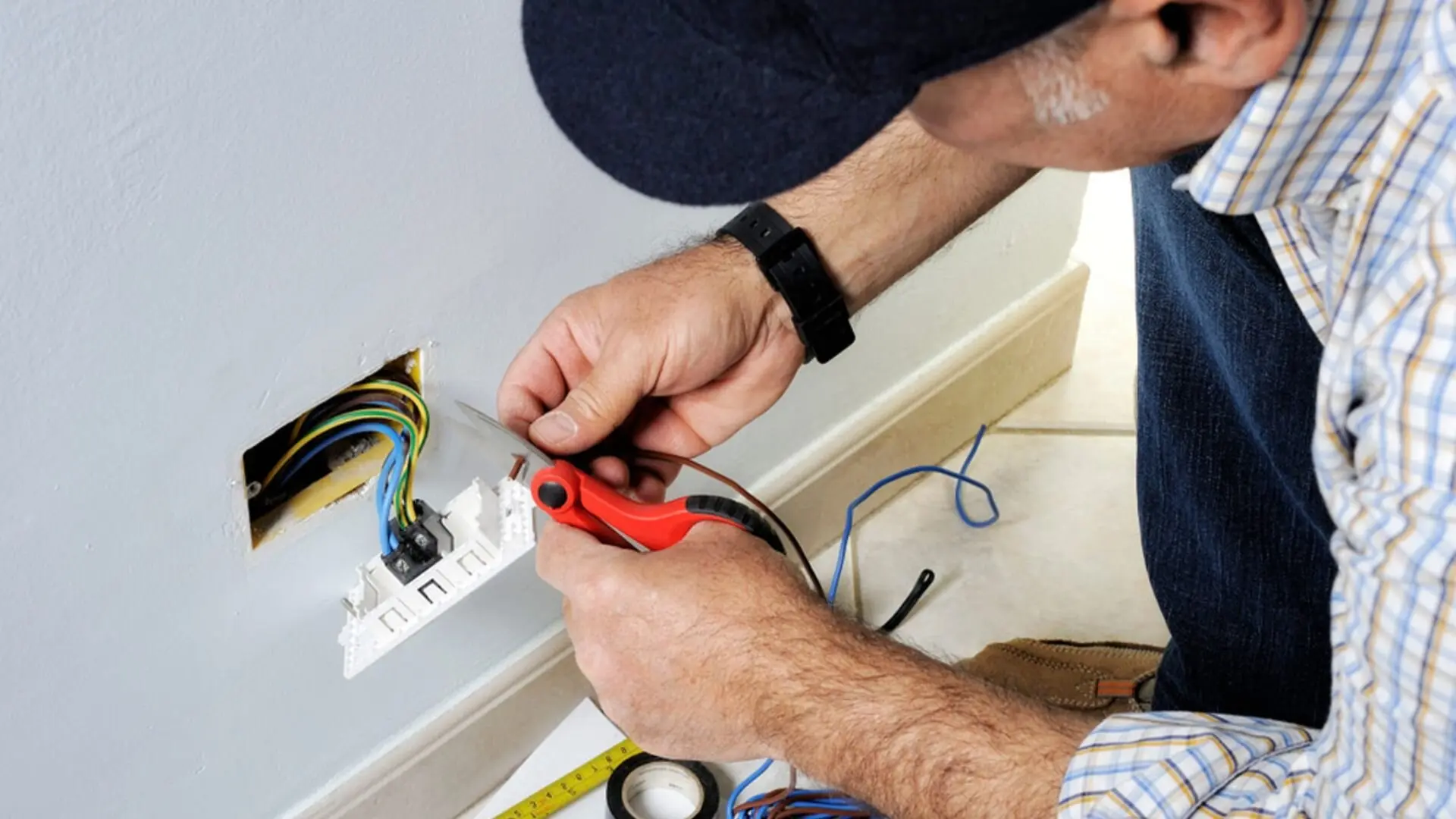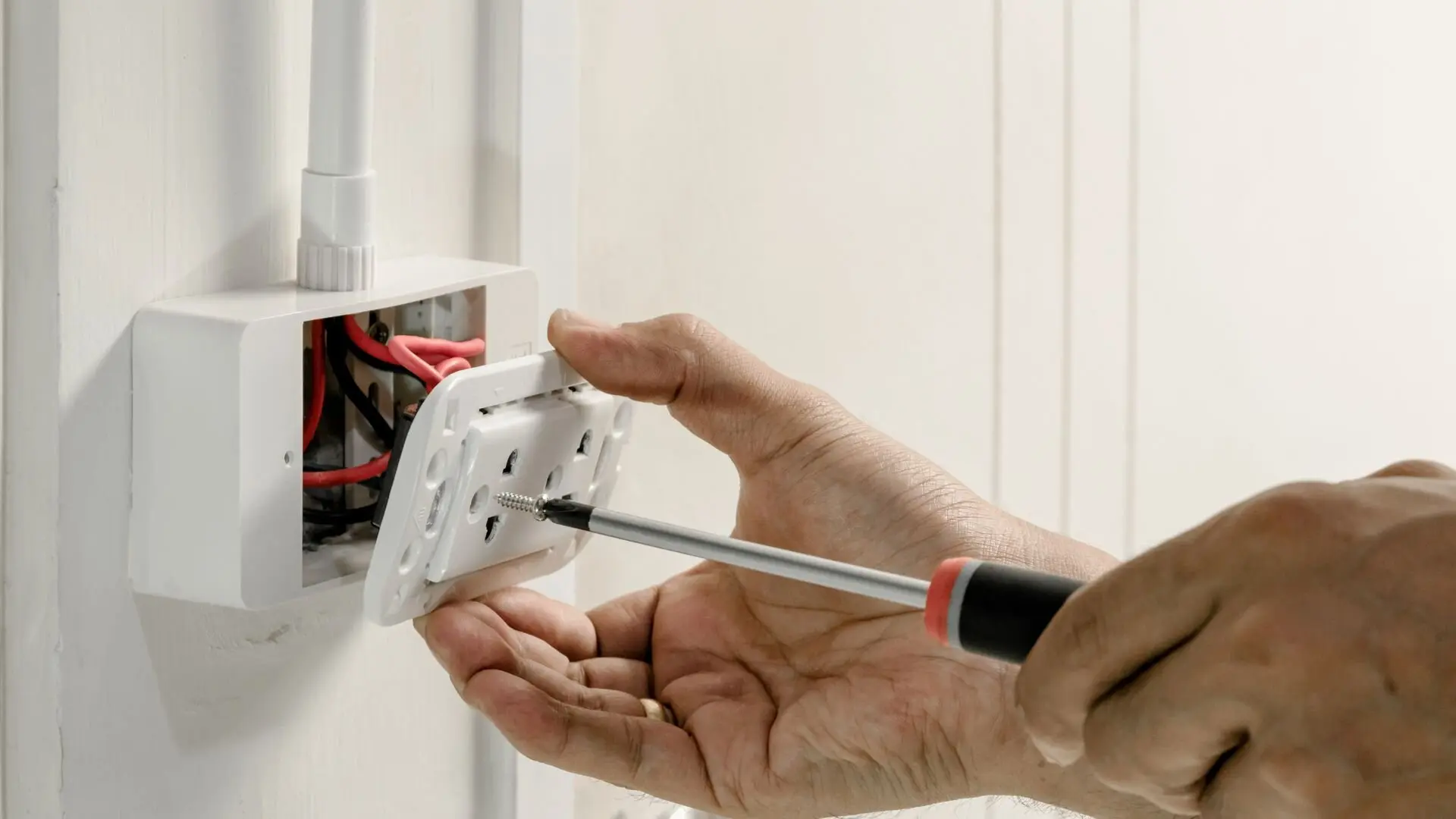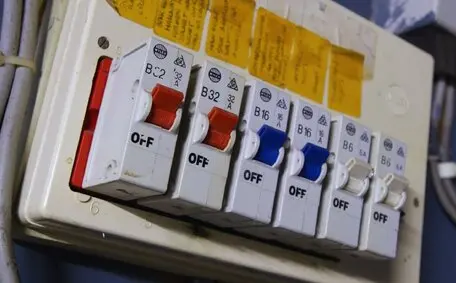Residential electrical work is crucial for every homeowner, ensuring their spaces function smoothly. From powering essential appliances to lighting and safety, a well-installed and maintained electrical system is integral to a comfortable, secure home environment.
Whether you’re a new homeowner or looking to upgrade your electrical system, this blog is your go-to resource for understanding and tackling residential electrical projects. We’ve got you covered, from basic wiring knowledge to advanced troubleshooting techniques.
So, let’s dive in.
Electrical Safety Basics
When it comes to residential electrical works, safety should be the foremost concern for homeowners. Understanding and implementing fundamental principles of electrical safety is crucial to protect yourself, your family, and your property from potential hazards. This section will explore key safety practices that every homeowner should follow.
Turn Off Power
Always switch off the power supply at the circuit breaker or remove the fuse before starting any electrical work. It’s prudent to use a voltage tester to confirm the power is truly off before you continue working.
Use Proper Tools And Equipment
Ensure you have the right tools and equipment for the task at hand. Insulated tools, such as screwdrivers and pliers, should be used to minimise the risk of electric shock. Furthermore, always use non-conductive ladders and wear protective gear, such as safety goggles and insulated gloves, when necessary.
Identify Electrical Hazards
Be aware of potential electrical hazards in your home. Look for frayed or damaged electrical cords, exposed wires, and overheating outlets or switches. If you notice any electrical problems, address them promptly or seek professional assistance.
![2023 07 Electrician Conducting Tests On Switchboard Electrician Conducting Tests Switchboard]()
Avoid Overloading Circuits
Overloading circuits can lead to overheating, electrical fires, and damage to your electrical system. Distribute electrical loads evenly across circuits and avoid using multiple high-power devices simultaneously on the same circuit.
Childproof Outlets And Switches
If you have young children, it’s essential to childproof your outlets. Install tamper-resistant outlets with built-in safety mechanisms to prevent children from inserting objects. Additionally, use outlet covers or plug unused outlets with safety caps.
Keep Water Away from Electricity
Water and electricity do not mix. Avoid using electrical appliances or touching switches with wet hands. During wet conditions, keep electrical cords and devices away from water sources like sinks, baths, and outdoor areas.
Sticking to these basics can greatly reduce your chances of electrical accidents, making your living space safer for the whole family. If you ever feel unsure or uneasy about tackling electrical work, it’s wise to reach out to a professional emergency electrician who can handle the job safely and effectively.
Common Residential Electrical Projects
Homeowners often face electrical projects needing attention and occasional upgrades. Understanding these projects saves money and time, so we’ve compiled common ones along with basic guidelines to help you tackle them successfully.
Installing New Power Outlets
Adding or replacing electrical outlets is a common project for homeowners. Before starting, ensure the power to the circuit is turned off. Based on the location and electrical requirements, determine the type of outlet needed (standard, GFCI, or AFCI). Follow proper wiring procedures and secure the outlet in place.
Indoor And Outdoor Light Fixture Installation
Upgrading or replacing light fixtures can enhance your home’s aesthetic appeal. Start by turning off the power and removing the existing fixture. Follow the manufacturer’s instructions for wiring the new fixture, ensuring proper connections and securing it firmly. Remember to test the light fixture before completing the installation.
![2023 07 Installing New Outlet In Residential Home Installing Outlet Residential Home]()
Upgrading To Energy-Efficient Ceiling Fands
Installing a ceiling fan can improve air circulation and comfort in your living spaces. Begin by turning off the power and removing existing light fixtures or ceiling fans. Follow the manufacturer’s instructions for mounting the fan, wiring it correctly, and attaching the blades securely. Test the fan to ensure it operates smoothly.
Replacing Old Or Damaged Switches
Over time, switches may become worn or malfunction. Replacing a switch is relatively straightforward. Turn off the power, remove the cover plate, and unscrew the switch from the electrical box. Note the wiring configuration and connect the new switch accordingly. Secure the switch, reattach the cover plate, and restore power to the circuit.
Understanding Electrical Wiring
Grasping basic electrical wiring is crucial for homeowners eager to handle projects or understand their home’s system better. This section covers the foundational aspects: different wire types, circuit breakers, and electrical panels.
Wire Types
Several types of electrical wires are used in residential settings. The most common ones include:
- Non-Metallic Sheathed Cable (NM): This is the most prevalent type of wiring used in homes. It comprises two or more insulated wires bundled together and encased in a plastic jacket. NM cables are commonly used for general wiring, such as powering outlets and lighting fixtures.
- Armoured Cable (AC): AC wiring consists of insulated wires protected by flexible metal armour. It provides increased durability and is commonly used in areas where the wiring may be exposed to physical damage.
- Electrical Metallic Tubing (EMT): EMT is a thin-walled metal conduit that protects electrical wires. It is commonly used in exposed areas, such as basements or garages.
![2023 07 Testing Residential Electrical Panel Testing Residential Electrical Panel]()
Circuit Breakers
Circuit breakers play a crucial role in electrical safety by protecting circuits from overloads and short circuits. They automatically shut off the power when an electrical fault occurs. Understanding your home’s circuit breaker panel is important for identifying and addressing electrical issues. Familiarise yourself with the panel’s location, how to identify tripped breakers, and how to reset them.
Electrical Switchboard And Panels
The electrical panel, also known as the switchboard, is where all the electrical circuits in your home originate. It houses the circuit breakers that control the flow of electricity to different areas or appliances. Understanding your electrical switchboard layout and the circuit breakers’ organisation can help you identify and isolate specific circuits when needed.
Troubleshooting Electrical Issues
Electrical issues can be frustrating and potentially hazardous if not addressed promptly and correctly. This section will guide troubleshooting common electrical problems that homeowners may encounter. Remember, safety should always be your top priority.
Tripped Breakers
A tripped circuit breaker is a common electrical issue. When a circuit is overloaded or experiences a short circuit, the breaker trips to protect the circuit from damage. To troubleshoot a tripped breaker:
- Locate the electrical panel and identify the tripped breaker. It will be in a position that is neither fully on nor fully off.
- Switch the tripped breaker to the off position and then back on. If it immediately trips again, there may be a more significant issue, and you should consult a professional.
Flickering Lights
Flickering lights might suggest loose connections, faulty bulbs, or circuit issues. Here’s how to troubleshoot: Check if the bulb is firmly screwed in, and tighten it if needed. Swap the bulb for a new one to rule out defects. If flickering continues, you might be looking at loose connections or more serious wiring problems, so calling an electrician is the way to go.
Non-Functional Outlets
If an outlet in your home stops working, it could be due to various reasons. To troubleshoot non-functional outlets:
- Check if the outlet receives power by plugging it into a working device.
- Check the circuit breaker to ensure it hasn’t tripped if there’s no power. If it has, follow the steps mentioned earlier to reset it.
- If the circuit breaker is not tripped, the issue could be a loose or faulty connection within the outlet. To avoid any risks, it’s advisable to seek professional help.
Circuit Overloads
Circuit overloads occur when too many electrical devices are connected to a single circuit, exceeding capacity. This can lead to tripped breakers or overheating. To troubleshoot circuit overloads:
- Identify the circuits that are frequently tripping or experiencing issues.
- Distribute the load by unplugging some devices or redistributing them across multiple circuits.
- Consider upgrading the electrical panel or adding additional circuits if overloading is a recurring problem.
![2023 07 Changing Over Power Outlet Changing Power Outlet]()
Hiring A Professional Electrician
Hiring a professional electrician is essential for complex electrical projects beyond your skill level. They bring expertise, experience, and knowledge to accurately assess your electrical needs, troubleshoot issues efficiently, and provide reliable solutions. With a focus on safety, professional electricians adhere to regulations, minimising the risk of accidents and electrical failures.
Professional electricians offer time and cost efficiency, completing tasks promptly and with the necessary tools and materials. They provide comprehensive services tailored to your needs, from installations to troubleshooting, ensuring compliance with building codes and regulations.
Hiring a professional electrician gives you peace of mind, knowing your electrical projects are not only compliant with regulations but also completed to the highest standards.
Empowering Homeowners in Residential Electrical Works
Congratulations! You have reached the end of our comprehensive guide to residential electrical works. We hope this blueprint has provided you with valuable insights and knowledge to confidently undertake electrical projects in your home.
With this guide, you now have the confidence and know-how to handle residential electrical tasks. Yet, some tasks might still need a professional’s touch. Always weigh the complexity and risks involved, keeping your safety and the work’s quality top priority.
If you’re in Sydney and require professional electrical services, we encourage you to contact Bright Force Electrical. Our team of qualified electricians is ready to assist you with your electrical needs. Whether it’s installations, repairs, or upgrades, we are committed to providing reliable, efficient, and safe solutions for your home. Call us today!












